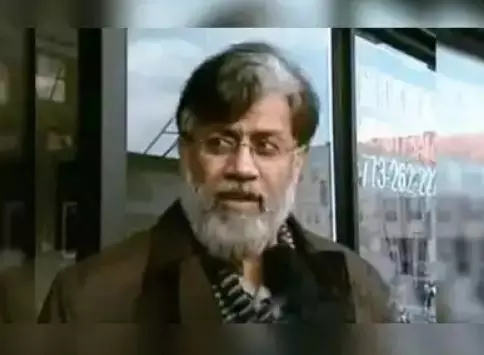Rana confronted with inputs on 2008 serial hits
On the second day of his custody, 26/11 Mumbai terror attack mastermind Tahawwur Rana was grilled by the NIA over the information that he had given earlier to the US’ Federal Bureau of Investigation (FBI) and confronted with additional inputs available with Indian agencies connected to the 2008 serial hits.

New Delhi:On the second day of his custody, 26/11 Mumbai terror attack mastermind Tahawwur Rana was grilled by the NIA over the information that he had given earlier to the US’ Federal Bureau of Investigation (FBI) and confronted with additional inputs available with Indian agencies connected to the 2008 serial hits.
According to sources, Rana was also confronted with the voice samples of two Pakistani Army officers — Major Sameer Ali alias Major Samir and Major Iqbal alias Major Ali — who were the handlers of the 10-member Pakistani terror team which had perpetrated the attacks and actively coordinated their movements to create mayhem through the attacks.
Major Iqbal, identified in a 2010 US indictment as a serving (Pakistani spy agency) ISI officer, is accused of being the pointsperson, who financed, directed and micromanaged the reconnaissance missions conducted by Rana’s co-conspirator and US citizen David Coleman Headley, earlier known as Daood Gilani.
These two Pakistani officers were sitting in the command and control centre set up in Karachi for communicating with the 10 Lashkar-e-Tayyaba (LeT) terrorists. Another of Rana’s co-conspirators and LeT operative Abu Jundal was also present in the command centre and had communicated with the “fidayeen” terrorists from the centre as the terror plot unfolded in 2008 in the country’s financial hub.
Rana was directly in contact with Sameer Ali through a cloned Indian SIM card in the run-up to the Mumbai attacks and the agencies had intercepted their calls.
In the secured and heavily guarded NIA headquarters, Rana’s interrogation is being videographed and his voice sample has been sent for forensic matching with the recordings of his conversation with the Pakistan Army officer Sameer Ali, which could serve as crucial evidence establishing his role in the terror plot, sources said.
The agency sleuths and those from the covert agencies are relying on the calls between Rana and Headley, recorded by the FBI in 2009, for uncovering the terror conspiracy connected to the Mumbai terror attacks.
Rana is also being questioned on an elusive co-conspirator from Dubai who was active before the 26/11 attacks. Rana had met this man in Dubai before the Mumbai siege. This individual, according to records shared by the US investigative agencies with the Indian authorities recently, knew about the impending attack. The NIA is investigating the identity and role of this individual in the case, sources said, adding that Headley allegedly facilitated Rana’s meet with this unidentified suspect. Officials are seeking to unearth if this man was associated with the ISI and Pakistani army or its proxy terror outfits.
As the NIA seeks to unravel the interplay of the Pakistani state actors and their terror cohorts behind the Mumbai terror conspiracy, the questioning is being conducted in a graded manner to corroborate the evidence already in its possession with the revelations from Rana, sources said.
Rana was also questioned over his regular contact with Sajid Mir, a designated global terrorist and one of India's most wanted suspects for his role as a principal handler during the 26/11 attacks. Mir is accused of directing the siege of Mumbai's Chabad House, where six hostages were killed.
The NIA investigators are grilling Rana to extract information in the conspiracy with an Indian perspective, which he did not share with the FBI. Mir has a bounty of $5 million from the US for his capture. India too had submitted in 2022 an audio recording to the United Nations where Mir was allegedly heard coordinating with the attackers during the siege.
Inputs with the NIA suggest that Rana, clad in a Pakistani Army uniform, met Major Iqbal, a suspected ISI officer, which is a pointer to the nexus between him and state actors in Islamabad.
Headley, who pleaded guilty in 2010 to avoid the death penalty from the US prosecution, has described Major Iqbal as his primary ISI handler, part of a trio of the Pakistani spy agency officers who "recruited, trained and directed" him. Headley’s 20 email exchanges with Major Iqbal and the fact that he came into his contact with Mir are part of the ongoing NIA probe.
While officials remained tight-lipped on the ongoing investigation, sources said Rana is being confronted with a lot of evidence and his statements will lead to "additional discoveries" on his links with other terrorists and possible sleeper cells, dormant or active, besides those accused in the Mumbai attack case.

